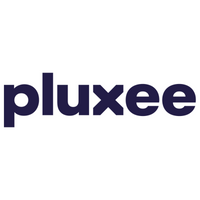How to re-engage employees in your employee benefits scheme and avoid pitfalls along the way

However, there are a number of potential pitfalls facing organisations when implementing and running a flexible benefits scheme, which can lead to employees undervaluing their benefits.
Is there a one-size-fits-all for employee benefits?
In short, no! People have different priorities that change throughout their lives so it’s impossible to have a one-size-fits-all for employee benefits. However, a flexible benefits scheme that offers added value will cover most eventualities if you take the time and make the effort to ask your employees want they want, which will be individual to each organisation.
Employers need to understand the diverse nature of the people who work for their organisation and design a flexible benefits scheme that gives employees choice.
Types of benefits
There is an immense variety of employee benefits available on the market, but the key to engaging employees in your scheme is to offer a choice that is useful and therefore valued. Too many organisations either offer too narrow a choice, or the wrong benefits altogether.
Employees have an overall preference for benefits that help employees with their financial wellbeing. Benefits that either cut the cost of living or make their monthly salary stretch further, such as high street discounts, discounted shopping vouchers and cashback cards, are very popular and can add value to employees without employers needing to increase their benefits budget.
Assessing what you need
Many employers are wasting the money they invest in employee benefits because they are not tailored to the workforce, particularly regarding age and gender.
In PwC’s research for example, female employees placed a greater value on medical insurance (32%) than men (24%). Meanwhile, company car schemes were more popular among men, with 29% choosing them as the benefit they’d most like to see introduced at work, compared to 21% of women.
Modern employee benefits schemes need to offer choice and flexibility. And offering benefits that are relevant to your employees’ lifecycle is key to ensuring inclusivity. A good starting point is to look at the take-up figures for your current benefits, as well as seeking your employees’ feedback not only on the benefits that you currently offer but also to get new ideas.
This can be done as part of a benefit review and should include employee surveys, focus groups, presentations and one-to-one sessions. It is also important to segment your employees so that you can address the needs of different groups, for example Generation X vs Baby Boomers, and ensure no individual group is missed out.
Finally, it is also an excellent idea to benchmark your current benefits, and your proposed benefits, against those of your competitors.
What you need to know about communicating employee benefits
The most important factor in influencing employee engagement and participation in a benefits scheme is communication. And adopting a properly phased, well-executed communications strategy is essential to increasing awareness of the scheme and improving staff engagement and participation.
Regular communication is essential to inform employees of any updates, changes and deadlines relating to the benefits scheme and to maintain engagement and participation. And if you get your communications right then you can be assured that your employees will have the knowledge and confidence to make best use of the benefits to suit their own personal situations.
Your communication strategy should aim to maximise employee engagement and participation. To achieve a successful level of engagement in the scheme, you first need to understand your staff and how they like to receive communications. Once you’ve researched this, you can then put into place a multi-channel communication strategy in order to reach all your employees. This should include:
- A great launch event will generate a buzz about your benefits.
- On-going communications to keep talking to your employees throughout the year about the benefits they are being offered and how they can help them.
- A mixture of communication channels based on how your employees like to access benefits information, such as posters, emails, online staff portals, SMS messages, leaflets, and staff handbooks.
- The right communications messages that focus on how the benefits can improve your employees’ lifestyle rather than just “aren’t our benefits wonderful?!”
Steps to success:
1) Plan ahead
Determine what benefits your employees want and add value, plan your communication programme and decide which KPIs you will report on.
2) Make it accessible
Employee benefits choices can be complex so make it easy for employees to access information about their choices and ensure that the information is easy to understand.
3) Access all hours
Employees are more likely to access employee benefits information from home or on their mobile devices so ensure your employee benefits scheme is accessible 24/7.
4) Avoid information overload
While it’s necessary to use multiple communication channels, avoid bombarding employees with too much information all at once - a properly thought out employee benefits communication plan will help.
5) Monitor and report
Engagement and participation in your employee benefits scheme is easy to measure with the proper tools and by planning ahead, and it gives you valuable insight into what works and what doesn’t.
6) Refine
Use the data from your employee benefits platform to improve the choice you give employees.
Creating engagement and participation in employee benefits takes time. You need to ensure that you offer added value employee benefits that are communicated appropriately, satisfy your employees’ basic needs, build your organisation culture and define what your organisation stands for in order to improve engagement levels and help you attract and retain the best talent.
James Malia is the director of employee benefits at P&MM Motivation, part of the Sodexo family.

This article was provided by P&MM Employee Benefits, part of the Sodexo family.
Supplied by REBA Associate Member, Pluxee UK
Pluxee UK, is a leading employee benefits and engagement partner that opens up a world of opportunities to help people enjoy more of what really matters in their lives.







